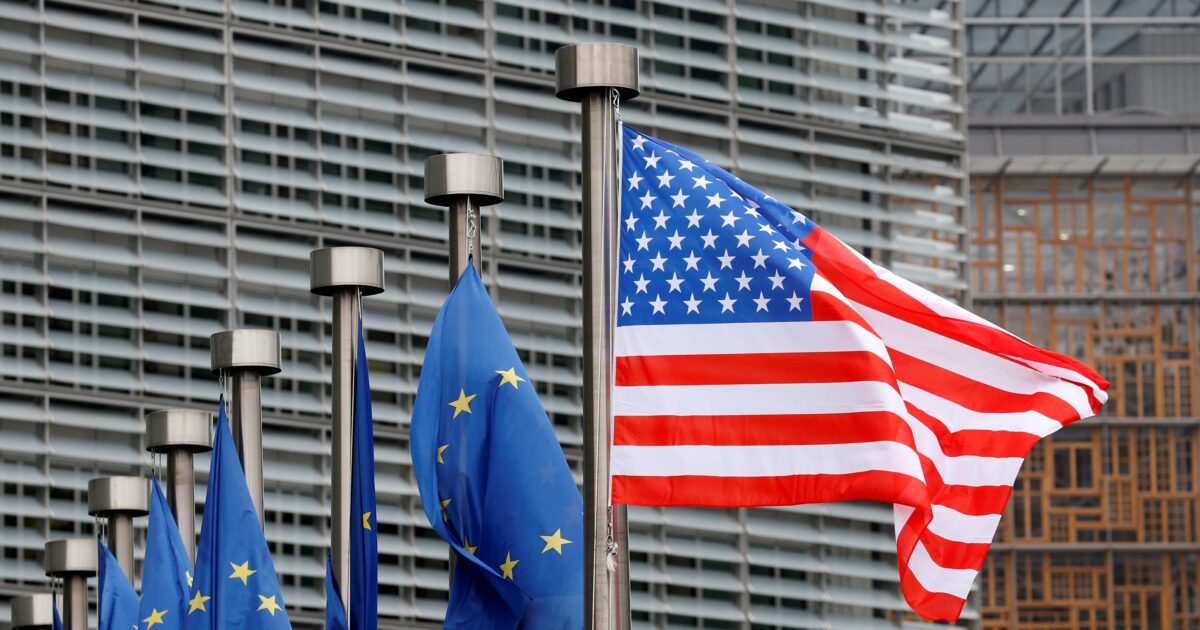The analysis and criticism exerted on the commercial agreement – framework between the European Union (EU) and the USA focused mainly on tariff A 15% rate for most exports of its 27 -member countries (estimated at 70% of their total value).
This rate is much higher than the 2.5% average duty on European products before US President Donald Trump’s decision to reshape the global trading system, citing high deficits in the trade balance and de -industrialization.
Compared, however, with the status of which was in force on April 9, when the 20% rate announced a week before and an additional horizontal duty of 10% was suspended, the difference is small, as the rate of 15% will be incorporated and the pre -existing duties will be incorporated.
Also, the 15% rate is lower than 20% and the 30% that the US president had threatened in early July, although they were in the negotiating tactic that followed.
In any case, however, the 15% will reduce the competitiveness of European businesses in the US market, with the potential consequences of reducing their exports and / or reducing their profitability, to the extent that the room for increased costs have a part of their exports. The significant appreciation of the euro in the last six months – which has been reduced, however, after the agreement was announced – is an additional corrosion of competitiveness.
However, the trade agreement has other aspects, which are important for European businesses and economies, but their basic details have not yet been clarified so that there is a better and overall assessment of the agreement.
The first versions of the agreement, as recorded in news notes by the European Commission on the one hand and the White House on the other, have differences between them, and both sides agree that the negotiation will continue to have a clearer picture.
A key aspect of the agreement concerns the opening of the European market to US products, something Washington longs for. What seems to have made it clear is that the EU will also remove existing low duties – on average 1% – in US industrial products.
The situation is more confused about imports of agricultural products from the US. The Commission’s announcement states that there will be better access to limited quantities of US fishing products, stating that they can be imported without duties up to a certain amount of Tariff Rate Quotas, among other things, cod from Alaska, Solomos from the Pacific and shrimp, “with the benefit of the EU”.
It also states that there will be better access “for some non -sensitive US agricultural exports worth 7.5 billion. Euro “, related to products such as soy, herbal seeds, cereals or nuts as well as processed foods – ketchup, cocoa and cookies – based on quotas,” reducing the costs for our farmers and processors while protecting the EU’s rural sensitivity “. Elsewhere, the Commission states that “the agreement protects sensitive areas of EU agriculture, such as the issue of beef or poultry.”
Another important aspect of the agreement concerns the so -called non -tariff barriers, such as the specifications that must meet third -country products so that they can be sold on the European market. In this regard there is probably the greatest ambiguity about what is to come. The White House news note states that “the US and the EU intend to work together to tackle non -tariff barriers that affect trade in food and agricultural products, including rationalizing the requirements for health certificates on American pork and dairy products”.
The Commission says, for this part, the non -tariffs will be reduced, “among other things through co -operation on car standards and by facilitating the mutual recognition of compliance assessments (with standards) and in other industries”. He stresses, however, that “the agreement fully respects the EU’s sovereignty in determining the regulatory framework”. It should also be noted that in a recent interview, US Secretary of Commerce, Howard Lutnik, noted that the Commission has placed a particular emphasis on the protection of the EU agricultural sector, as well as the drug and semiconductor.
Of particular importance is the capital of the agreement on European products that will be excluded from the 15%rate, which, however, must also be clarified. The Commission’s news note states that “from August 1, US air duties and spare parts, in some chemicals, some generic medicines or national resources will return to pre -January levels … This will provide immediate relief for the EU and the EU.
It should be noted here that during oral briefing by the European point of view on the agreement they were included in the list of products that would not be imposed 15% and “some agricultural products”. It had even been reported that there were discussions about the exception of wine and in general the alcoholic beverages. However, as the Commission spokesman said on Thursday, there has not yet been agreement on this and it was not expected that these products were included in the first group of exceptions announced by the US.
